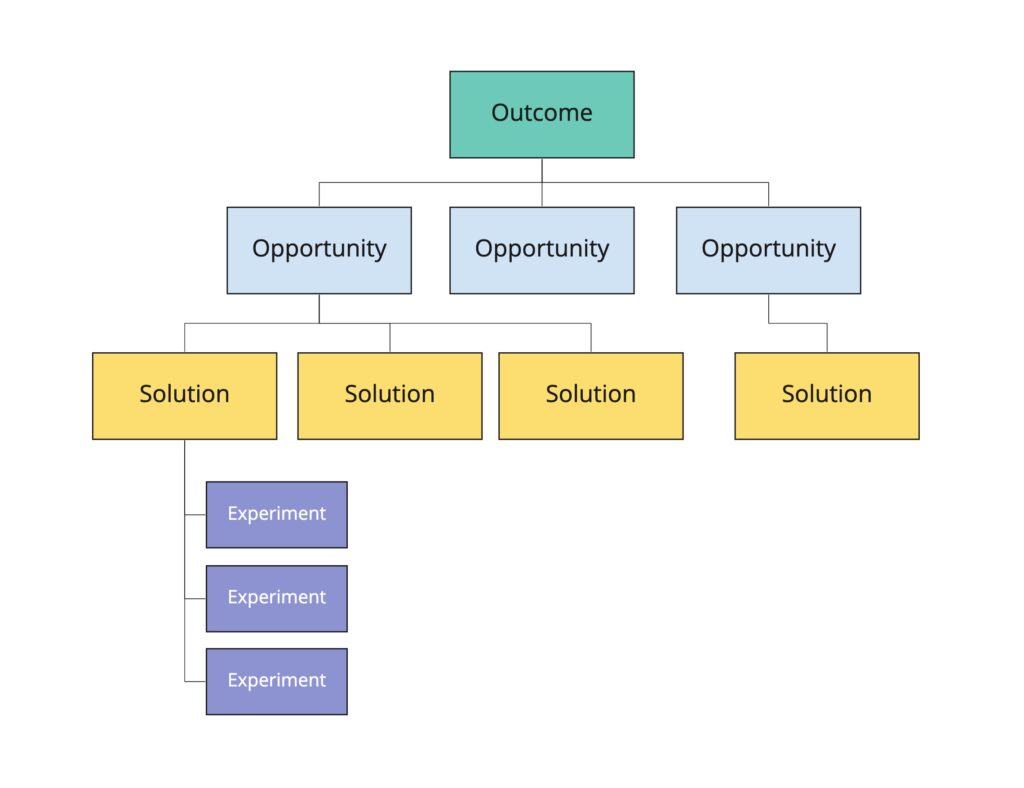Generating Better Ideas for Your Products — Lessons from Teresa Torres
-
Bella Williams
- 10 min read

If you are a product manager, designer, or researcher, unless you are Teresa Torres, you might be familiar with the difficulty of coming up with good ideas. And when we say “good ideas”, we are talking of groundbreaking but actionable notions within the realm of executability. I mean, yes, we’ve probably all thought about the brilliant idea of putting a jetpack on a car to get to the office faster. Still, the reality of propulsion physics and transit networks makes that an impractical idea.
So, in the case of product discovery, what qualifies as a good idea? Simply put, a good idea helps you create products that solve real customer problems while also delivering value for your business. But even when we say it that way, it doesn’t seem to narrow down the pool of ideas or differentiate between bad, good and better ones.
Because, yes, there are multiple great ideas. But how do you know which problems to focus on, which solutions to try, and which to ship?
One way to answer these questions is to adopt continuous discovery habits. Continuous discovery is a way of working that helps you discover products that create customer value and business value. It involves constantly learning from your customers, generating and testing many ideas, and making fast and informed decisions.
In this blog post, we discuss some insights from Teresa Torres, a product discovery coach and the author of the book Continuous Discovery Habits. Torres has helped hundreds of teams adopt continuous discovery practices and improve product outcomes.
Outcome vs output
One of the key suggestions of Teresa Torres’ gospel of continuous discovery is to focus on outcomes rather than outputs. Outcomes are the changes in customer behavior or business results you want to achieve with your product. Outputs are the features or solutions that you build and ship.
In her words:
“Shifting to an outcome mindset is harder than it looks. We spend most of our time talking about outputs. So, it’s not surprising that we tend to confuse the two. Even when teams intend to choose an outcome, they often fall into the trap of selecting an output. I see teams set their outcome as “Launch an Android app” instead of “Increase mobile engagement” or “Get to feature parity on the new tech stack” instead of “Transition customer to the new tech stack.”
By focusing on outcomes, you can avoid falling in love with your solutions and instead keep an open mind about what might work best for your customers and your business. You can also measure your progress more effectively and validate your assumptions more quickly.
How to shift to an outcome mindset
To shift to an outcome mindset, Torres suggests using a simple framework called opportunity solution trees. An opportunity solution tree is a visual tool that helps you map out the possible paths to reach your desired outcome.

Courtesy of Joe Rinaldi Johnson
It consists of three elements:
An outcome: The change in customer behavior or business result that you want to achieve.
Opportunities: The customer problems, needs, or desires that are related to your outcome.
Solutions: The ideas or hypotheses that you have for addressing the opportunities.
Using an opportunity solution tree, you can generate many ideas for different opportunities and solutions and prioritize them based on their potential impact and feasibility. You can also test your thoughts with customers and learn what works and what doesn’t.
Does Group Brainstorming give better ideas for your products?
Another habit of continuous discovery that Torres talks about is generating many ideas for your products. Alleviate the pressure to come up with a brilliant idea at once and just churn out as many ideas as possible. After all, as they say, let the bad water flow, and over time, pure water will follow.
However, contrary to popular belief, brainstorming in groups is not the best way to do that. Torres cites research that shows that individuals are more effective at generating ideas than groups.
“Study after study found that the individuals generating ideas alone outperformed the brainstorming groups. Individuals generated more ideas, more diverse ideas, and more original ideas,” Teresa says.
“Many people argued that the most common problems with brainstorming can be counteracted with good facilitation. This is true. Trained facilitators do help. But they help groups get to the same level of individuals working alone. They don’t help groups outperform individuals.”
Why is Group Brainstorming for better ideas inefficient?

Brainstorming for ideas
Torres explains that group brainstorming has several drawbacks, such as:
Social loafing: Some people tend to contribute less when in a group than when alone.
Production blocking: Some people have to wait for their turn to speak or write down their ideas, which reduces their creativity and productivity.
Evaluation apprehension: Some people are afraid of being judged or criticized by others for their ideas, which inhibits their originality and diversity.
Conformity pressure: Some people tend to agree with or imitate the ideas of others, which reduces the variety and quality of ideas.
To overcome these challenges, Torres recommends using a technique called brainwriting. Brainwriting is a method of generating ideas individually and then sharing them with others for feedback and improvement1. It involves four steps:
- Write down as many ideas as you can on sticky notes or index cards in a limited time (e.g., 10 minutes).
- Shuffle your notes or cards and exchange them with another person.
- Review the notes or cards you received and add new ideas or improve existing ones.
- Repeat steps 2 and 3 until everyone has seen all the notes or cards.
- By using brainwriting, you can leverage the benefits of both individual and group ideation. You can generate more ideas, more diverse ideas, more original ideas—and ultimately, better ideas.
Interviews
Arguably the best way to get better ideas on how to help your product become more valuable to customers is to listen to the customers themselves. Sometimes, it’s just that simple. Learning from your customers continuously might give you better insight into how to solve their problems or how to optimise your existing solutions for them.
To help product teams learn from customers continuously, Torres suggests using a simple framework called interview solution tests. An interview solution test is a way of testing your ideas with customers in a conversational way. We will write more about conducting customer interviews in our next blog post.
The interviewing process can be a chore, and product teams often dread the process of transcribing and manually sifting through hours of customer feedback to draw out the specific insights that are needed to make actionable decisions. This is the core of the work we do here at insight7. Our software, created by product stakeholders for product stakeholders, is an AI-powered tool that can help you transcribe videos, analyse customer feedback and draw insights from the data in seconds. You can learn more about it here.
Conclusion
In conclusion, the Continuous discovery habits that Teresa Torres speaks about are a powerful way of generating better ideas for your products. They help you focus on outcomes rather than outputs, generate many ideas rather than few, and learn from customers rather than guess. By adopting these habits, you can unleash your creativity and build unique products that create customer value and business value (instead of trying to slap a jetpack on a car!).
If you want to learn more about continuous discovery habits, I highly recommend reading Teresa Torres’ book Continuous Discovery Habits. It contains practical advice, examples, and exercises to help you master these habits and improve your product outcomes. You can find more books for product teams to study here.







